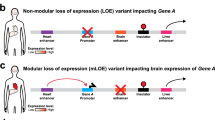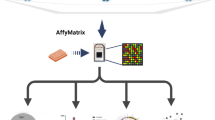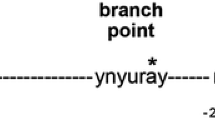Abstract
Purpose
The goal of this study was to assess genes known to be associated with tooth agenesis with next-generation sequencing (NGS) and analyze the relationship between these mutations and tooth agenesis phenotypes.
Methods
The study included 49 individuals aged between 6 and 13 years. A total of 14 genes related to nonsyndromic tooth agenesis were selected for targeted NGS. Mutations in Msh homeobox 1 (MSX1), Wnt family member 10A (WNT10A), axis inhibition protein 2 (AXIN2), keratin 17 (KRT17), lipoprotein receptor 6 (LRP6), and secreted protein, acidic and rich in cysteine (SPARC)-related modular calcium-binding protein 2 (SMOC2) genes were investigated.
Results
Mutations in six genes were detected in 12 of 49 subjects. Fifteen variants were identified, including the unknown variants c.657G > C in MSX1, c.2029C > T in AXIN2, and c.1603A > T in LRP6. Second premolar tooth agenesis was observed in 43.3% of all tooth agenesis cases with mutations, and it was the predominant phenotype observed for each mutated gene, followed by tooth agenesis of the lateral incisors (20%).
Conclusions
Variations in MSX1, WNT10A, AXIN2, KRT17, LRP6, and SMOC2 may be a risk factor for hypodontia or oligodontia in the Turkish population.
Zusammenfassung
Zielsetzung
Ziel dieser Studie war es, als assoziiert mit Zahnagenesien bekannte Gene mittels NGS („next-generation sequencing“) zu untersuchen und den Zusammenhang zwischen diesen Mutationen und dem Phänotyp der Zahnagenesie zu analysieren.
Methoden
In die Studie wurden 49 Personen im Alter zwischen 6 und 13 Jahren eingeschlossen. Insgesamt wurden 14 mit nichtsyndromaler Zahnagenesie assoziierte Gene für ein gezieltes NGS ausgewählt. Untersucht wurden Mutationen in den Genen MSX1 („Msh homeobox 1“), WNT10A („Wnt family member 10A“), AXIN2 („axis inhibition protein 2“), KRT17 („keratin 17“), LRP6 („lipoprotein receptor 6“) und SMOC2 („SPARC[„secreted protein, acidic and rich in cysteine“]-related modular calcium-binding protein 2“).
Ergebnisse
Mutationen in 6 Genen wurden bei 12 von 49 Probanden nachgewiesen. Fünfzehn Varianten wurden identifiziert, darunter die unbekannten Varianten c.657G > C in MSX1, c.2029C > T in AXIN2, and c.1603A > T in LRP6. Eine Agenesie der zweiten Prämolaren wurde in 43,3 % aller Fälle mit Mutationen beobachtet und war der vorherrschende Phänotyp für jedes mutierte Gen, gefolgt von einer Agenesie der seitlichen Schneidezähne (20 %).
Schlussfolgerungen
Variationen in MSX1, WNT10A, AXIN2, KRT17, LRP6 und SMOC2 können ein Risikofaktor für Hypodontie oder Oligodontie in der türkischen Bevölkerung sein.

Similar content being viewed by others
References
Alfawaz S, Fong F, Plagnol V, Wong FS, Fearne J, Kelsell DP (2013) Recessive oligodontia linked to a homozygous loss-of-function mutation in the SMOC2 gene. Arch Oral Biol 58:462–466. https://doi.org/10.1016/j.archoralbio.2012.12.008
Auton A, Brooks LD, Durbin RM, Garrison EP, Kang HM, Korbel JO, Marchini JL, McCarthy S, McVean GA, Abecasis GR (2015) A global reference for human genetic variation. Nature 526:68–74. https://doi.org/10.1038/nature15393
Beard C, Purvis R, Winship IM, Macrae FA, Buchanan DD (2019) Phenotypic confirmation of oligodontia, colorectal polyposis and cancer in a family carrying an exon 7 nonsense variant in the AXIN2 gene. Fam Cancer 18:311–315. https://doi.org/10.1007/s10689-019-00120-0
Bloch-Zupan A, Jamet X, Etard C, Laugel V, Muller J, Geoffroy V, Strauss JP, Pelletier V, Marion V, Poch O, Strahle U, Stoetzel C, Dollfus H (2011) Homozygosity mapping and candidate prioritization identify mutations, missed by whole-exome sequencing, in SMOC2, causing major dental developmental defects. Am J Hum Genet 89:773–781. https://doi.org/10.1016/j.ajhg.2011.11.002
Bock NC, Lenz S, Ruiz-Heiland G, Ruf S (2017) Nonsyndromic oligodontia : does the Tooth Agenesis Code (TAC) enable prediction of the causative mutation? J Orofac Orthop 78:112–120. https://doi.org/10.1007/s00056-016-0056-y
Dabbagh B, Cukier O, Yeganeh M, Halal F, Dos Santos BF (2019) Pachyonychia congenita associated with a novel variant of KRT17 presenting unusual oral manifestations. J Dent Child 86:61–63
Dinckan N, Du R, Petty LE, Coban-Akdemir Z, Jhangiani SN, Paine I, Baugh EH, Erdem AP, Kayserili H, Doddapaneni H, Hu J, Muzny DM, Boerwinkle E, Gibbs RA, Lupski JR, Uyguner ZO, Below JE, Letra A (2018) Whole-exome sequencing identifies novel variants for tooth agenesis. J Dent Res 97:49–59. https://doi.org/10.1177/0022034517724149
Du R, Dinckan N, Song X, Coban-Akdemir Z, Jhangiani SN, Guven Y, Aktoren O, Kayserili H, Petty LE, Muzny DM, Below JE, Boerwinkle E, Wu N, Gibbs RA, Posey JE, Lupski JR, Letra A, Uyguner ZO (2018) Identification of likely pathogenic and known variants in TSPEAR, LAMB3, BCOR, and WNT10A in four Turkish families with tooth agenesis. Hum Genet 137:689–703. https://doi.org/10.1007/s00439-018-1907-y
Fournier BP, Bruneau MH, Toupenay S, Kerner S, Berdal A, Cormier-Daire V, Hadj-Rabia S, Coudert AE, de La Dure-Molla M (2018) Patterns of dental agenesis highlight the nature of the causative mutated genes. J Dent Res 97:1306–1316. https://doi.org/10.1177/0022034518777460
Gass JK, Wilson NJ, Smith FJ, Lane EB, McLean WH, Rytina E, Salvary I, Burrows NP (2009) Steatocystoma multiplex, oligodontia and partial persistent primary dentition associated with a novel keratin 17 mutation. Br J Dermatol 161:1396–1398. https://doi.org/10.1111/j.1365-2133.2009.09383.x
Haddaji Mastouri M, De Coster P, Zaghabani A, Jammali F, Raouahi N, Salem BA, Saad A, Coucke P, H’Mida Ben Brahim D (2018) Genetic study of non-syndromic tooth agenesis through the screening of paired box 9, msh homeobox 1, axin 2, and Wnt family member 10A genes: a case-series. Eur J Oral Sci 126:24–32. https://doi.org/10.1111/eos.12391
He H, Han D, Feng H, Qu H, Song S, Bai B, Zhang Z (2013) Involvement of and interaction between WNT10A and EDA mutations in tooth agenesis cases in the Chinese population. Plos One 8:e80393. https://doi.org/10.1371/journal.pone.0080393
Khanom R, Nguyen CT, Kayamori K, Zhao X, Morita K, Miki Y, Katsube K, Yamaguchi A, Sakamoto K (2016) Keratin 17 is induced in oral cancer and facilitates tumor growth. PLoS ONE 11:e161163. https://doi.org/10.1371/journal.pone.0161163
Kopanos C, Tsiolkas V, Kouris A, Chapple CE, Albarca Aguilera M, Meyer R, Massouras A (2019) VarSome: the human genomic variant search engine. Bioinformatics 35:1978–1980. https://doi.org/10.1093/bioinformatics/bty897
Liu W, Dong X, Mai M, Seelan RS, Taniguchi K, Krishnadath KK, Halling KC, Cunningham JM, Boardman LA, Qian C, Christensen E, Schmidt SS, Roche PC, Smith DI, Thibodeau SN (2000) Mutations in AXIN2 cause colorectal cancer with defective mismatch repair by activating beta-catenin/TCF signalling. Nat Genet 26:146–147. https://doi.org/10.1038/79859
Massink MP, Creton MA, Spanevello F, Fennis WM, Cune MS, Savelberg SM, Nijman IJ, Maurice MM, van den Boogaard MJ, van Haaften G (2015) Loss-of-function mutations in the WNT co-receptor LRP6 cause autosomal-dominant oligodontia. Am J Hum Genet 97:621–626. https://doi.org/10.1016/j.ajhg.2015.08.014
Mostowska A, Biedziak B, Zadurska M, Matuszewska-Trojan S, Jagodzinski PP (2015) WNT10A coding variants and maxillary lateral incisor agenesis with associated dental anomalies. Eur J Oral Sci 123:1–8. https://doi.org/10.1111/eos.12165
Ockeloen CW, Khandelwal KD, Dreesen K, Ludwig KU, Sullivan R, van Rooij I, Thonissen M, Swinnen S, Phan M, Conte F, Ishorst N, Gilissen C, RoaFuentes L, van de Vorst M, Henkes A, Steehouwer M, van Beusekom E, Bloemen M, Vankeirsbilck B, Berge S, Hens G, Schoenaers J, Poorten VV, Roosenboom J, Verdonck A, Devriendt K, Roeleveldt N, Jhangiani SN, Vissers L, Lupski JR, de Ligt J, Von den Hoff JW, Pfundt R, Brunner HG, Zhou H, Dixon J, Mangold E, van Bokhoven H, Dixon MJ, Kleefstra T, Hoischen A, Carels CEL (2016) Novel mutations in LRP6 highlight the role of WNT signaling in tooth agenesis. Genetics in medicine : official journal of the American College of Medical Genetics 18:1158–1162. https://doi.org/10.1038/gim.2016.10
Ruiz-Heiland G, Lenz S, Bock N, Ruf S (2019) Prevalence of WNT10A gene mutations in non-syndromic oligodontia. Clin Oral Invest 23:3103–3113. https://doi.org/10.1007/s00784-018-2731-4
Salvi A, Giacopuzzi E, Bardellini E, Amadori F, Ferrari L, De Petro G, Borsani G, Majorana A (2016) Mutation analysis by direct and whole exome sequencing in familial and sporadic tooth agenesis. Int J Mol Med 38:1338–1348. https://doi.org/10.3892/ijmm.2016.2742
Singh R, Smith E, Fathzadeh M, Liu W, Go GW, Subrahmanyan L, Faramarzi S, McKenna W, Mani A (2013) Rare nonconservative LRP6 mutations are associated with metabolic syndrome. Hum Mutat 34:1221–1225. https://doi.org/10.1002/humu.22360
Song L, Li Y, Wang K, Wang YZ, Molotkov A, Gao L, Zhao T, Yamagami T, Wang Y, Gan Q, Pleasure DE, Zhou CJ (2009) Lrp6-mediated canonical Wnt signaling is required for lip formation and fusion. Development 136:3161–3171. https://doi.org/10.1242/dev.037440
Song S, Zhao R, He H, Zhang J, Feng H, Lin L (2014) WNT10A variants are associated with non-syndromic tooth agenesis in the general population. Hum Genet 133:117–124. https://doi.org/10.1007/s00439-013-1360-x
Venselaar H, Te Beek TA, Kuipers RK, Hekkelman ML, Vriend G (2010) Protein structure analysis of mutations causing inheritable diseases. An e‑Science approach with life scientist friendly interfaces. BMC Bioinform 11:548. https://doi.org/10.1186/1471-2105-11-548
Vink CP, Ockeloen CW, ten Kate S, Koolen DA, Ploos van Amstel JK, Kuijpers-Jagtman AM, van Heumen CC, Kleefstra T, Carels CE (2014) Variability in dentofacial phenotypes in four families with WNT10A mutations. Eur J Hum Genet 22:1063–1070. https://doi.org/10.1038/ejhg.2013.300
Williams BO, Insogna KL (2009) Where Wnts went: the exploding field of Lrp5 and Lrp6 signaling in bone. J Bone Miner Res 24:171–178. https://doi.org/10.1359/jbmr.081235
Ye X, Attaie AB (2016) Genetic basis of nonsyndromic and syndromic tooth agenesis. J Pediatr Genet 5:198–208. https://doi.org/10.1055/s-0036-1592421
Yu M, Wong SW, Han D, Cai T (2019) Genetic analysis: Wnt and other pathways in nonsyndromic tooth agenesis. Oral Dis 25:646–651. https://doi.org/10.1111/odi.12931
Yue H, Liang J, Yang K, Hua B, Bian Z (2016) Functional analysis of a novel missense mutation in AXIN2 associated with non-syndromic tooth agenesis. Eur J Oral Sci 124:228–233. https://doi.org/10.1111/eos.12273
Zhang SJ, Wu ZZ (2016) WNT10A polymorphism may be a risk factor for non-syndromic hypodontia. Genet Mol Res. https://doi.org/10.4238/gmr.15016033
Schwarz JM, Cooper DN, Schuelke M, Seelow D (2014) MutationTaster2: mutation prediction for the deep-sequencing age. Nat Methods 11(4):361–362
Quang D, Chen Y, Xie X (2015) DANN: a deep learning approach for annotating the pathogenicity of genetic variants. Bioinformatics 31(5):761–763
Richards S, Aziz N, Bale S, Bick D, Das S, Gastier-Foster J, Grody WW, Hegde M, Lyon E, Spector E, Voelkerding K, Rehm HL; ACMG Laboratory Quality Assurance Committee (2015) Standards and guidelines for the interpretation of sequence variants: a joint consensus recommendation of the American College of Medical Genetics and Genomics and the Association for Molecular Pathology. Genet Med 17(5):405–424
Acknowledgements
Thanks for all the contributors and participants.
Author information
Authors and Affiliations
Corresponding author
Ethics declarations
Conflict of interest
G. Keskin, K. Karaer and Z. Uçar Gündoğar declare that they have no competing interests.
Ethical standards
The study protocol was approved by the Clinical Research Ethics Committee of Gaziantep University in Turkey. All participants and their parents were informed about the study, and consent forms were obtained.
Additional information
Publisher’s Note
Springer Nature remains neutral with regard to jurisdictional claims in published maps and institutional affiliations.
Supplementary Information
Rights and permissions
About this article
Cite this article
Keskin, G., Karaer, K. & Uçar Gündoğar, Z. Targeted next-generation sequencing (NGS) analysis of mutations in nonsyndromic tooth agenesis candidate genes. J Orofac Orthop 83 (Suppl 1), 65–74 (2022). https://doi.org/10.1007/s00056-021-00284-4
Received:
Accepted:
Published:
Issue Date:
DOI: https://doi.org/10.1007/s00056-021-00284-4




